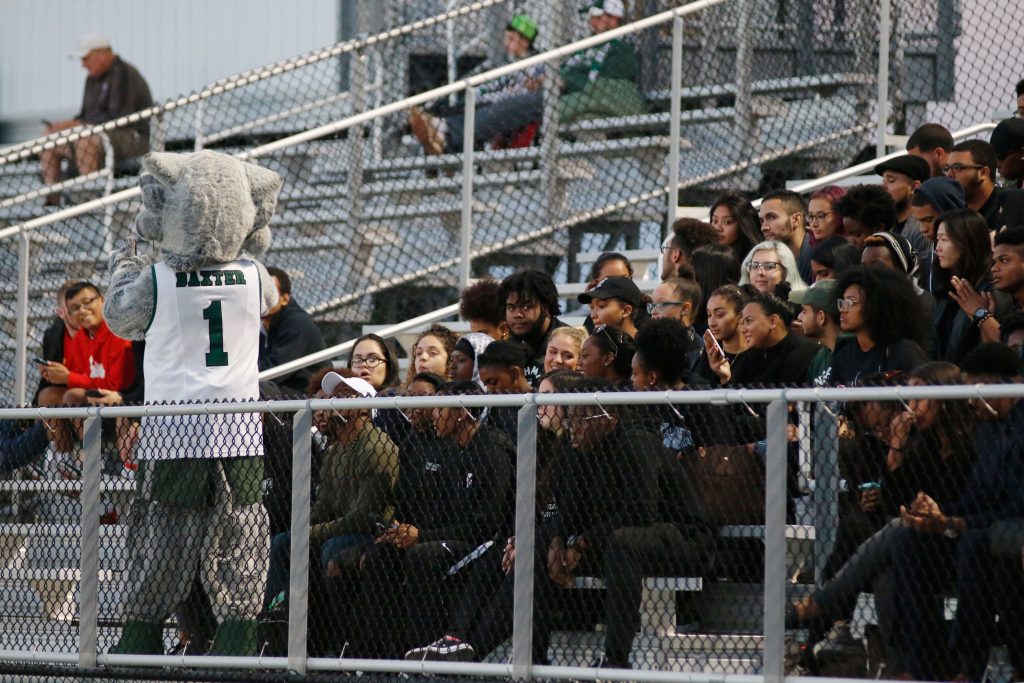
Over 250 students, faculty and staff dressed in black and walked from the Clock Tower to the Bearcats Sports Complex on Tuesday to protest police brutality during a Binghamton University soccer game against Bucknell University.
During the silent demonstration, participants filled the bleachers and remained seated during the national anthem. This instance was meant to mirror other protests happening on college campuses nationwide, such as Georgetown University and Amherst College. All of these protests are inspired by the San Francisco 49ers quarterback Colin Kaepernick’s refusal to stand for the national anthem.
Jermel McClure, Jr., the Student Association vice president for multicultural affairs and a junior majoring in political science, helped organize the protest. He worked with student groups such as the College Progressives, the Black Student Union, the Latin American Student Union, the African Student Organization, the Men of Color Scholastic Society, the Juvenile Urban Multicultural Program and the Thurgood Marshall Pre-law Society. McClure and these groups also submitted an open letter to Pipe Dream, which was published on Tuesday.
“We are not protesting Binghamton University, the athletes on the soccer team, or the U.S. Military,” the statement read. “We are protesting our ailing criminal justice system.”
At the beginning of the protest, McClure addressed those gathered on the Spine. He thanked everyone for their support, and stressed the importance of drawing attention to police brutality and social inequity.
“A lot of students may be asking us why we’re here,” McClure said. “We’re here to protest police brutality […] we must make this a Binghamton problem.”
Jacob Lazen, a junior majoring in anthropology, attended the protest. While many students came to support the effort, he said he was disappointed by the turnout.
“I was saddened by the fact that so few white people came to support,” Lazen said.
McClure also cited a recent statistic from the Equal Justice Initiative, which stated that over 170 African Americans have died from police shootings so far in 2016.
“The fact of the matter is, black and brown people around our nation cannot avoid police brutality,” McClure said. “It is something that is always with us. It is important that we have that sort of awareness on our campus, that we make our voices heard and we make the nation know, and people around us know that we will not be inactive.”
McClure also asked participants not to speak to the media, which he said was to avoid any misinterpretation of the protest’s intent. A video of the protest was posted to Facebook, and has received over 3,000 views and has been shared over 90 times in two days. This feedback channels the sentiment shared in Tuesday’s open letter.
“We believe that it is important for students to voice their concerns and make their disappointment with our nation’s response to the venomous criminal justice system heard,” the statement read. “We recognize that inaction and complacency will only make matters worse, and result in more unnecessary police causalities. We cannot standby and wait for someone else, somewhere else to take action. As engaged students, and future leaders we must take a stance.”
The protest was a success, McClure said, and it was a positive and effective way for students to express their concerns.
“There is a large community of people on our campus willing to take a stance against police brutality,” McClure said. “When we come together as a united front, like we did during the protest, there is nothing that can prevent us from creating effective change.”


